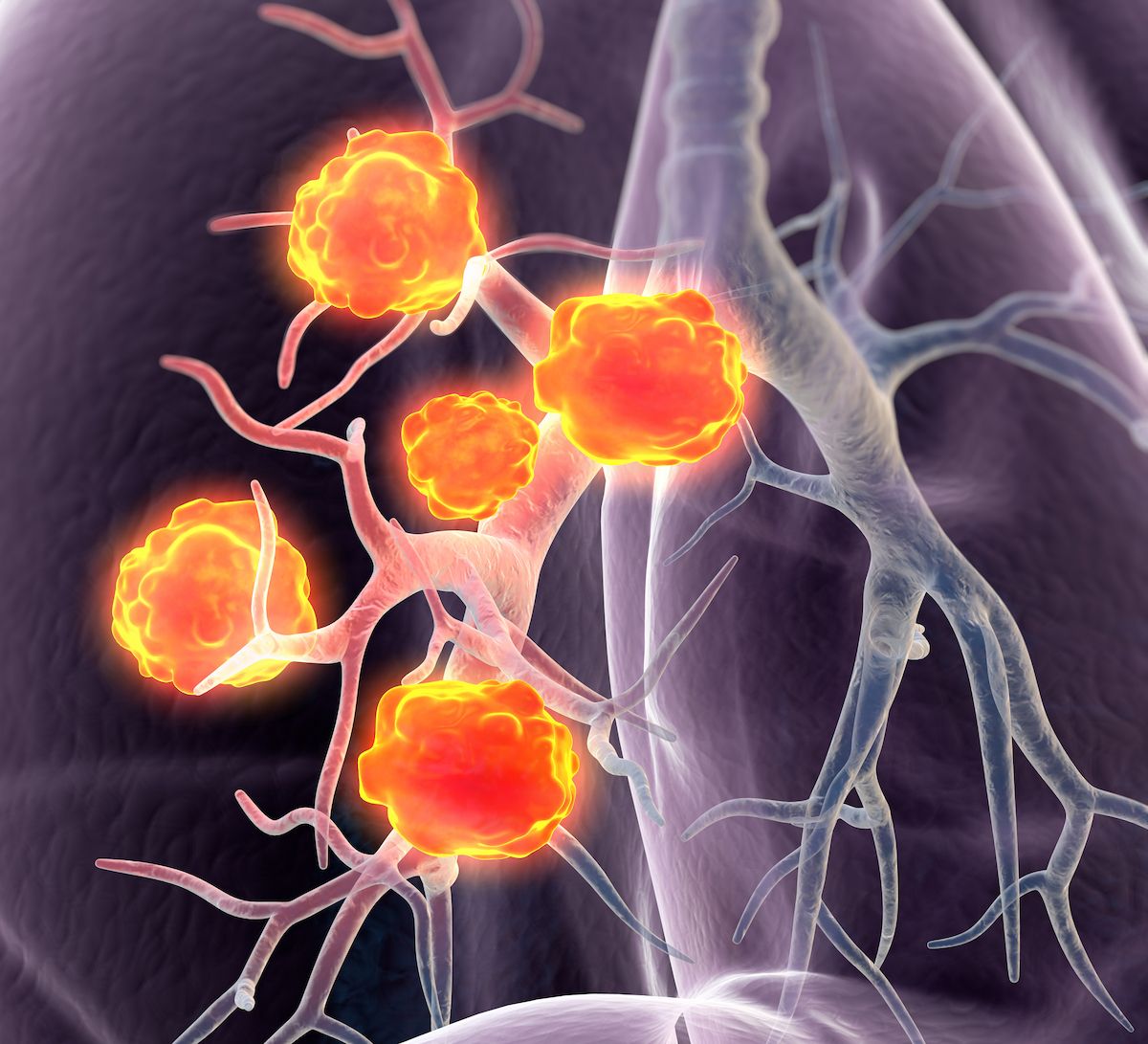Repotrectinib Yields Enduring Responses in ROS1+ NSCLC
Treatment with repotrectinib in patients with ROS1 fusion–positive non–small cell lung cancer results in mostly low-grade adverse effects in the phase 1/2 TRIDENT-1 trial.
"Repotrectinib had durable activity and led to a response in a high percentage of patients with ROS1 fusion–positive NSCLC, which included patients with tumors that had not been previously treated with a ROS1 TKI, tumors that had been previously treated with a ROS1 TKI, ROS1 G2032R resistance mutations, and brain metastases," according to the study authors.

Administering repotrectinib (Augtyro) to patients with ROS1 fusion–positive non–small cell lung cancer (NSCLC) resulted in enduring clinical activity regardless of prior treatment with a ROS1 tyrosine kinase inhibitor (TKI), according to findings from the phase 1/2 TRIDENT-1 trial (NCT03093116) published in New England Journal of Medicine.
The confirmed objective response rate (ORR) was 79% (n = 56/71; 95% CI, 68%-88%) in patients who received no prior treatment with a ROS1 TKI, which included partial responses (PRs) in 69% (n = 49/71) and complete responses (CRs) in 10% (n = 7/71). Additionally, the median duration of response (DOR) in this group was 34.1 months (95% CI, 25.6-not estimable [NE]), and 79% (95% CI, 68%-90%) of patients were estimated to have an ongoing response for at least 18 months. The median progression-free survival (PFS) was 35.7 months (95% CI, 27.4-NE), and the estimated PFS rate at 18 months was 70% (95% CI, 59%-81%).
Among patients who received prior treatment with 1 ROS1 TKI without chemotherapy, the confirmed ORR was 38% (n = 21/56; 95% CI, 25%-52%), which included PRs in 32% (n = 18/56) and CRs in 5% (n = 3/56). Data highlighted a median DOR of 14.8 months (95% CI, 7.6-NE), with ongoing responses observed in 56% (95% CI, 34%-77%) for 12 or more months. The median PFS for patients in this group was 9.0 months (95% CI, 6.8-19.6), with an estimated 12-month rate of 41% (95% CI, 27%-56%).
“Repotrectinib had durable activity and led to a response in a high percentage of patients with ROS1 fusion–positive NSCLC, which included patients with tumors that had not been previously treated with a ROS1 TKI, tumors that had been previously treated with a ROS1 TKI, ROS1 G2032R resistance mutations, and brain metastases,” the study authors wrote. “[Adverse] effects [AEs] related to decreased TRK activity were as expected, a finding that was similar to that for other TKIs that inhibit TRK. Comparative trials may be needed to define the role of repotrectinib in the treatment sequence.”
In the registrational TRIDENT-1 trial, patients received repotrectinib at a recommended phase 2 dose (RP2D) of 160 mg once daily for 14 days followed by 160 mg twice daily.
Patients 18 years and older with tumors harboring a ROS1 fusion and at least 1 measurable lesion confirmed by BICR were eligible to enroll on the trial.
The primary end points included the maximum-tolerated dose and RP2D in the phase 1 portion and confirmed ORR per blinded independent central review (BICR) based on RECIST v1.1 criteria in the phase 2 portion of the trial. Secondary end points included DOR, clinical benefit, PFS, overall survival, intracranial responses, safety, and patient-reported outcomes.
The median patient age was 57 years (range, 28-80) among patients with no prior treatment with a ROS1 TKI and 57 years (range, 33-78) among those who previously received a ROS1 TKI without chemotherapy. Most patients in each respective group were female (61% vs 68%), had an ECOG performance status of 1 (66% vs 68%), stage IV metastatic disease (94% vs 98%), and adenocarcinoma histology (97% vs 95%). Among those who previously received treatment with a ROS1 TKI, the most common agents included crizotinib (Xalkori; 82%), entrectinib (Rozlytrek; 16%), and ceritinib (Zykadia; 2%).
Intracranial responses were reported in 89% (n = 8/9; 95% CI, 52%-100%) of those with measurable brain metastases at baseline and no prior treatment with a ROS1 TKI compared with 38% (n = 5/13; 95% CI, 14%-68%) of those who received 1 prior ROS1 TKI without chemotherapy. In each respective group, 83% (95% CI, 54%-100%) and 60% (95% CI, 17%-100%) of patients experienced an intracranial response for 12 or more months.
Among patients without brain metastases at baseline, the estimated 12-month intracranial PFS rate was 91% (95% CI, 83%-100%) among those who did not receive prior treatment with a ROS1 TKI compared with 82% (95% CI, 65%-98%) in those who were previously treated with a ROS1 TKI.
The most common any-grade treatment-related adverse effects (TRAEs) included dizziness (58%), dysgeusia (50%), and paresthesia (30%). Additionally, grade 3 or higher TRAEs affected 29% of patients and generally consisted of anemia (4%) and increased blood creatine kinase levels (4%).
AEs resulting in dose reduction, dose interruption, and treatment discontinuation, respectively, were highlighted in 38%, 50%, and 7% of patients. AEs leading to death occurred in 4% of patients; investigators stated that none of these deaths were attributable to study treatment.
Reference
Drilon A, Camidge DR, Lin JJ, et al. Repotrectinib in ROS1 fusion-positive non–small-cell lung cancer. N Engl J Med. 2024;390(2):118-131. doi:10.1056/NEJMoa2302299